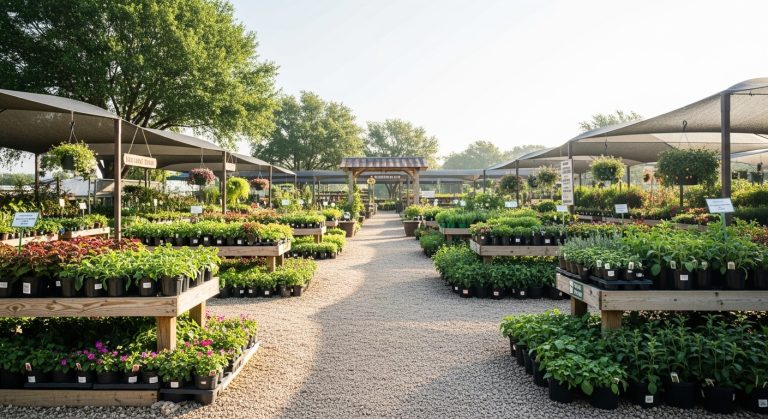Korean Garden Design: 15 Inspiring Ideas for Your Yard
Boldly stepping into a garden styled with Korean elegance feels like entering a quiet poem—soft curves, stone, water, trees that look like they’ve stood for centuries. I personally noticed this effect when I visited a small Korean-style garden and found myself slowing down, noticing the sound of water, the positioning of stones, the way plants nodded gently in the breeze. That moment made me realise just how powerful the concept of korean garden design can be—not just a look, but a feeling of harmony, of connecting with nature in a subtle, refined way.
This matters now more than ever. Many of us are trying to make outdoor spaces restful, culturally rich, meaningful—not just Instagram-ready. And Korean garden design offers a blueprint: blending human enjoyment and natural beauty, using elements that reflect landscape, philosophy and mood. (For instance, one guide notes that Korean garden style emphasises “the human enjoyment of the natural environment” and integrated elements like trees, water, rocks, seating.
So if you’re curious about bringing that style into your yard—no matter how big or small—hang with me. I’ll walk you through 15 ideas rooted in Korean garden design, each one practical, inspiring and honest about the trade-offs. This isn’t just theory—it’s about your space, your lifestyle, and the joy of sitting back and being part of the garden.
1. Embrace Natural-Contours & Borrowed Scenery

Let’s start with one of the core ideas: rather than imposing straight lines and rigid form, allow the garden to follow its own natural contour and borrow scenery—that is, integrate views beyond the garden boundary. In Korean garden design you’ll often find a subtle path that curves around a pond, rocks placed to echo nearby hills, or a visual line that pulls your gaze outward.
Pros:
- Creates a sense of spaciousness and openness, even in small yards—your view goes “out” not just “in”.
- Feels calm, organic and less forced; the garden appears to evolve rather than be forced.
- Adds depth and interest: your eye travels, you discover layers rather than just one flat view.
Cons:
- Might be harder to execute in a completely flat or extremely rectangular plot—contours or “borrowed view” may be limited.
- Requires thoughtful sight-lines and placement of plants or structures so the borrowed scenery actually works.
Takeaway:
If you let your garden reflect its natural shape and link to the landscape beyond, you’ll get more sense of place and peace—IMO the essence of Korean garden design.
2. Use Water Features with Subtlety & Reflection
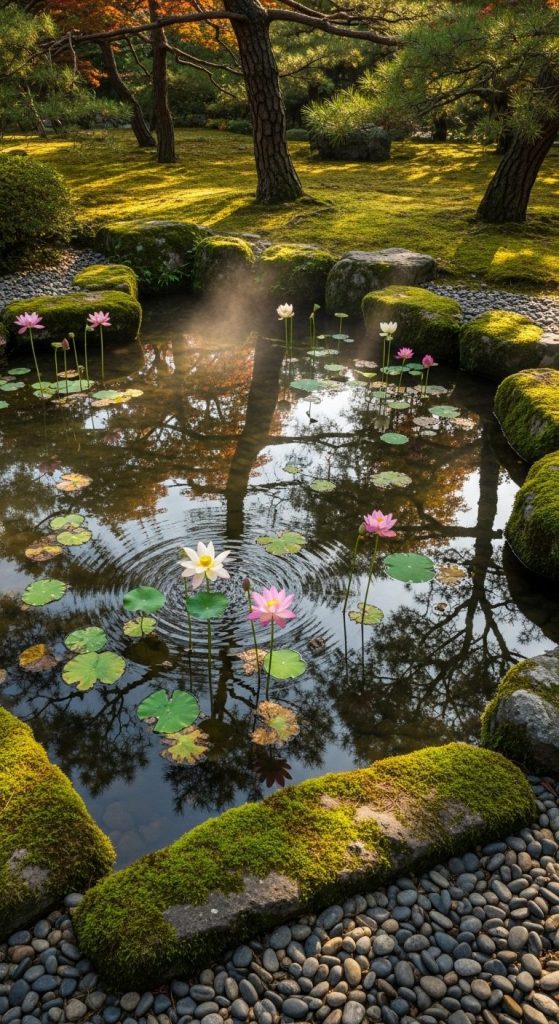
Water plays a big role in Korean gardens: not for big splashy fountains necessarily, but for gentle ponds, narrow streams, the reflective surface that slows down time. A popular source says: “Korean gardens place a lot of emphasis on water … ponds might have lotus, stone borders, and reflect the surroundings.”
Pros:
- Reflective surfaces add visual calm and depth—water mirrors trees, sky, architecture.
- Sound of water or stillness adds a sensory layer: you don’t just see the garden, you feel it.
- Works well to cool the space and contrast textures (rock, plant, water).
Cons:
- Requires some maintenance: clean edges, plants in water, possible mosquitoes or need for filtration.
- Safety or access concerns—if you have children or pets you’ll want to think about edges.
Takeaway:
If you pick just one feature to bring the Korean garden spirit into your yard, a modest water element brings calm, reflection, and living texture.
3. Rock & Stone Placement with Meaning

Here’s one of my favourite parts of Korean garden design: rocks are not just decoration—they carry meaning, they evoke mountains, they anchor the space. Traditional texts say stone arrangements (Susok) symbolised things like the three mountain gods, and older Korean gardens used rock groupings to evoke “round heaven, square earth”.
Pros:
- Rock gives permanence and texture: your garden isn’t just flowers that come and go—it has structure.
- Works beautifully with plants and water: think of a boulder beside a stream or stone path winding through moss.
- Symbolically rich—if you care about meaning, this gives depth and story to your space.
Cons:
- Heavy to install: large stones need work, might need delivery, base, leveling.
- If over-done, can feel stark or “rock garden” not “harmonious garden”—balance is key.
Takeaway:
Use stone as foundation in your design—it grounds everything. When done with intention, it elevates a garden beyond “nice” into meaningful.
4. Asymmetry, Irregularity & Natural Flow
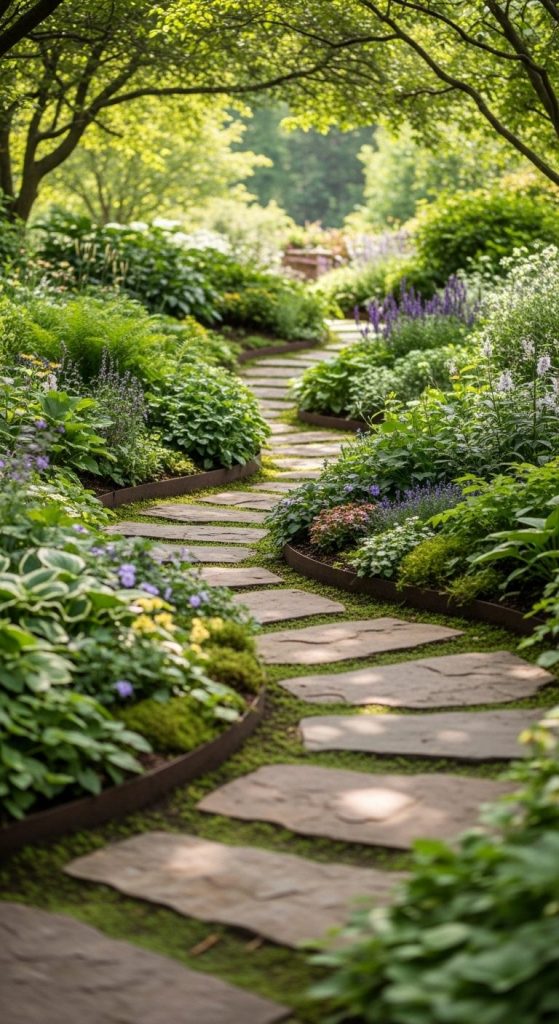
Contrary to many Western formal gardens, Korean garden design often favours asymmetry and irregular paths—wonky stones, winding routes, visual pause points rather than straight lines.
Pros:
- Feels more relaxed and less ‘man-made’, which means more inviting and less stiff.
- Encourages exploration: you turn a corner and see something new rather than a fixed view.
- Builds character—imperfections become part of the design.
Cons:
- Takes careful design to avoid “messy” when you intend “informal”.
- If guests expect symmetry (e.g., in a modern home), the contrast may feel odd.
Takeaway:
When your garden’s paths meander and your plant-beds flow, you’re touching the spirit of Korean garden design—inviting delight in the journey.
5. Use Native Trees & Symbolic Plants

In Korean gardens you’ll find pine trees (symbol of longevity), bamboo (flexibility), lotus or water lilies (purity), and maples for autumn colour. These plants aren’t just pretty—they carry symbolism.
Pros:
- Plants with meaning add narrative to your garden, making it more than just a backdrop.
- Many traditional species are hardy, low-maintenance and provide seasonal interest.
- Using native or region-appropriate plants helps ecosystem health and tie to place.
Cons:
- Some symbolic plants may not suit your climate—so you’ll need adaptation or substitutes.
- If you go full symbolic, you risk the garden feeling thematic rather than natural.
Takeaway:
Pick plants with story and significance—then they do double-duty: they look good and they enrich your space emotionally.
6. Garden Structures & Pavilion-Style Retreats
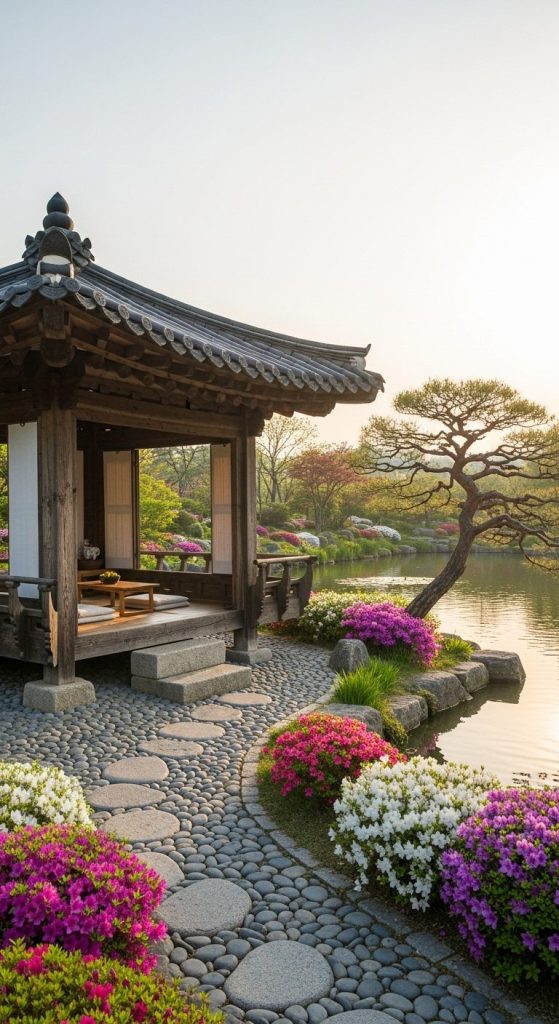
In traditional Korean gardens, your gaze often ends at a small pavilion, a tea house, or a simple structure where you can pause. These aren’t grand palaces—they’re modest shelters meant for reflection.
Pros:
- Provides a focal point and function: a place to sit, read, drink tea, observe the garden.
- Helps blur indoor/outdoor boundaries and gives dimension to the garden.
- Can be scaled to fit any size space—big or small.
Cons:
- Requires build time and budget—even a small pavilion means materials, foundation, weatherproofing.
- Location is key—if you place it in the wrong spot, it can feel like an after-thought.
Takeaway:
Add a modest structure as your destination in the garden—a place to pause. It gives your design weight, meaning and function.
7. Minimalism & Restraint Over Excess

One of the subtle but powerful themes in korean garden design is restraint—not over-planting, not too many ornaments, not chasing every trend, but focusing on quality, space and simplicity.
Pros:
- Less maintenance, fewer elements to care for—more peace.
- Gives your garden breathing room; negative space becomes meaningful.
- Lets each element shine rather than competing for attention.
Cons:
- Might feel “empty” if you’re used to lush, busy planting—takes a shift in mindset.
- Requires strong sense of design and decision-making (what you won’t put in matters).
Takeaway:
Trim the noise, pick your elements carefully, and let your garden speak softly but clearly.
8. Seasonal Change & Media of Time
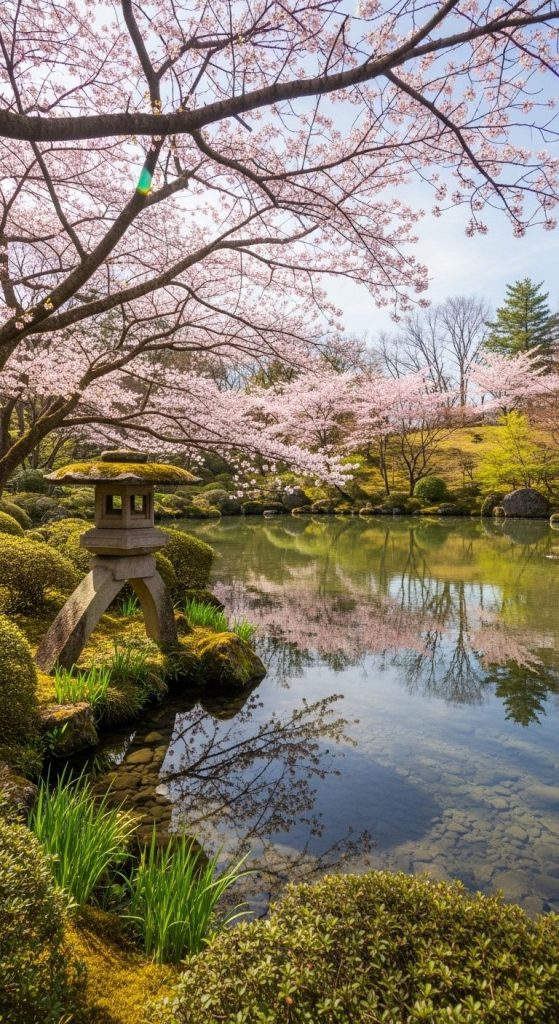
Korean gardens celebrate the seasons—blossoms in spring, lotus in summer, fiery maples in autumn, snow on pines in winter. They’re built to age and to transform.
Pros:
- Gives year-round interest—your garden isn’t just pretty one month, then forgotten.
- Deepens connection: you notice changes, cycles, rhythms—not just static beauty.
- Encourages you to spend more time outdoors and observe.
Cons:
- You may need to plan for winter interest (evergreens, structure) which means going beyond just “summer plants”.
- Some seasonal elements (e.g., water lilies) may require special maintenance or climate adaptation.
Takeaway:
Design your garden for time, not just moment. Then it stays alive through spring, summer, autumn and winter—not just a snapshot.
9. Curved Paths, Stones & Bridges

In many Korean gardens, gentle curves and paths lead the eye, stone bridges cross ponds, and you feel like you’re walking through a natural journey rather than a lawn.
Pros:
- Walking the garden becomes an experience—not just step out, look, leave.
- Curves and bridges add interest, encourage slower pace, create vistas.
- Works well for meditation, reflection, relaxing outdoor time.
Cons:
- Construction may cost more than straight paths; require proper foundation and drainage.
- If you have a very tight space, curves may eat up area or feel forced.
Takeaway:
Let your garden invite you to wander—not just stand. The journey becomes part of the design.
10. Walls, Gates & Enclosures That Frame Nature
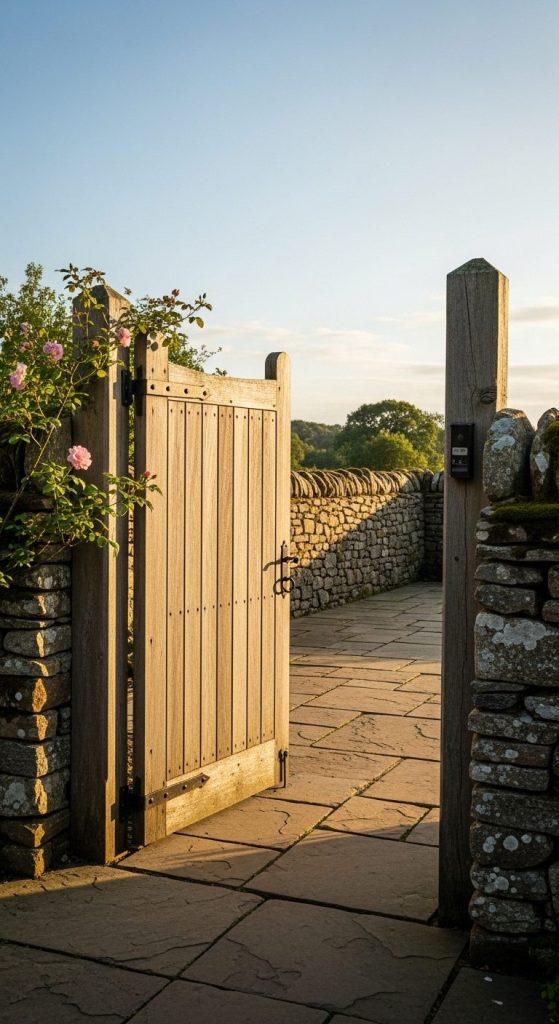
Rather than boxing the garden in, Korean garden design uses walls, gates or screens to frame views or create a sense of refuge and transition.
Pros:
- Helps define garden space while offering privacy and structure.
- Creates layering: you move from outer world → gate → garden interior.
- Offers opportunities for interesting materials (stone, wood, lattice) that add texture.
Cons:
- Builds cost and may require permissions depending on height and materials.
- If walls are too heavy or closed, you lose openness—and Korean style tends to favour harmony with broader landscape.
Takeaway:
Use enclosures not as barriers but as frames for nature—structural, yes. But light, welcoming, and harmonised.
11. Paths & Ground Cover with Texture and Simplicity
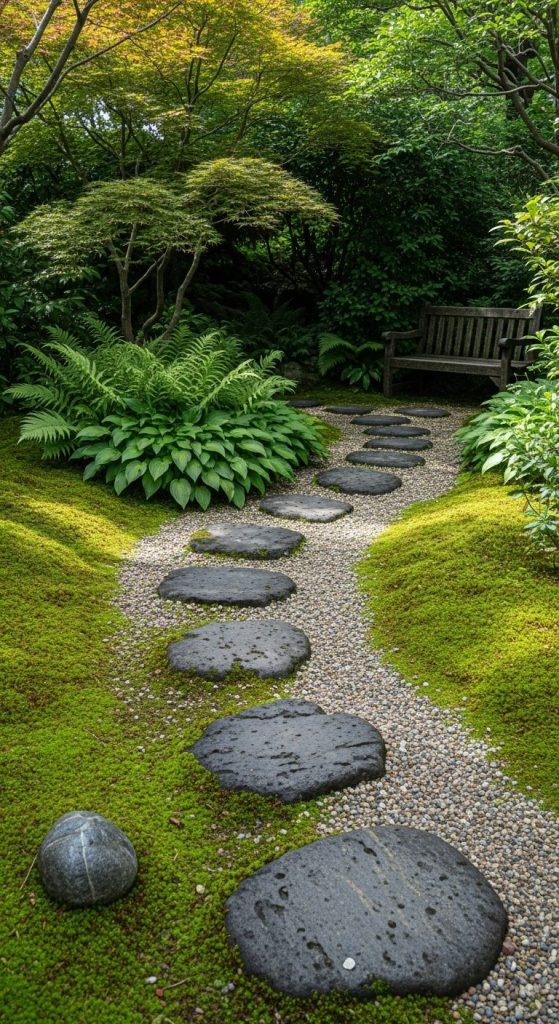
Ground surfaces matter: gravel, moss, stepping-stones, compacted earth—all used in Korean garden design in place of highly polished lawns.
Pros:
- Textured ground invites closeness to nature: you feel the crunch of gravel, the softness of moss underfoot.
- Helps reduce monotony of lawn; can be more low-maintenance or climate-adapted.
- Adds subtle aesthetic changes and sensory experience (sound, feel).
Cons:
- Some covers (moss) need shade, moisture and may be slower to establish.
- Gravel may shift, need edging and weed control; stepping stone design requires careful layout.
Takeaway:
Think beyond grass. Choose surfaces that reflect nature, texture and time—and your garden will feel richer for it.
12. Simplicity in Colour & Material Palette

In contrast to flamboyant gardens, Korean design often uses restrained palettes—muted greens, natural stones, weathered wood, occasional accents. This doesn’t mean boring, just refined.
Pros:
- Looks elegant and timeless; doesn’t feel dated quickly.
- Materials age gracefully—weathered wood, patinaed stone.
- Lets plants and water shine — materials don’t compete.
Cons:
- If you love bright colour or bold contrasts, you may feel something’s missing.
- Without thoughtful variation, a muted palette can slip into “flat” or “uninspired”.
Takeaway:
Choose materials that age well and colours that calm rather than shout—your garden becomes a place of quiet delight.
13. Outdoor Seating & Contemplative Spaces

Korean gardens often include a simple bench, a pavilion seat, a quietly placed sitting spot rather than a full patio party zone. It’s about pause.
Pros:
- Encourages the garden to be used not just looked at—sit, sip tea, reflect.
- Helps define the rhythm of the space: path → stop → view → rest.
- Adds humane scale—makes the garden feel personal and lived-in.
Cons:
- Seating often needs weather protection, comfortable materials, and thoughtful placement (shade, view).
- If you only invest in seating and neglect the surroundings, the space may feel deserted or under-used.
Takeaway:
Give yourself a seat in your garden. Make one moment of stillness part of the design—and you’ll use the space more often.
14. Connect the Garden to the Wider Landscape & Horizon
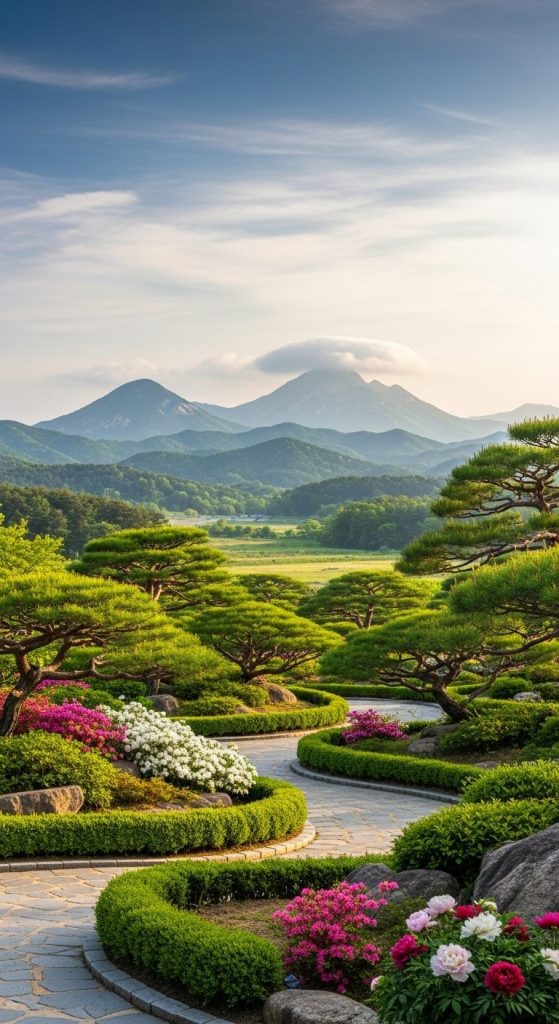
One hallmark of Korean garden design is blending the immediate garden space with the larger view: hills, sky, trees beyond the fence. This helps the garden feel expansive and integrated.
Pros:
- Makes even modest gardens feel larger—view beyond becomes part of the design.
- Encourages harmony with nature outside your plot—not just inside.
- Gives you a deeper sense of connection, of place.
Cons:
- If your surroundings are not attractive (neighbours, buildings) you may need screening or framing rather than exposing.
- Requires sight-line planning and may limit how “walled-in” you can make your garden.
Takeaway:
Your garden’s not just within its fence. Let it breathe toward the horizon and it becomes richer, broader, more rooted.
15. Adaptation for Modern Living: Fusion of Tradition & Contemporary

Lastly, adapting Korean garden design for today: you may add modern elements (lighting, furniture, sustainability features) while staying true to traditional values of naturalism and harmony. Many experts note that Korean garden design has evolved to fit contemporary contexts.
Pros:
- You get the best of both worlds: timeless design + modern usability.
- Makes your garden truly yours: culturally inspired but functional for family life.
- Increases value and longevity of your space—design that lasts.
Cons:
- Balancing tradition and modern can be tricky—you might end up with neither fully unless careful.
- Modern features (lighting, screens, furniture) may need more maintenance or cost.
Takeaway:
If you love Korean garden design but live in a modern home, don’t copy a museum. Adapt the spirit, keep the meaning, and make the garden serve your life today.
Conclusion
There you have it—15 ideas grounded in korean garden design, each one offering a different angle: from contours and water, rock and season, texture and simplicity, to adaptation and living with the space. As I looked at different Korean gardens and thought about how elements work together, I realised the recurring theme: harmony. Not harmony for show, but quiet, embedded harmony between nature, human use and time.
If I had to pick one favourite takeaway? It’s this: your garden doesn’t have to look “foreign” or overly themed to reflect Korean design. It just has to feel thoughtful, natural, calm—and give you that moment when you just pause and breathe. When you walk into it and you know you’re home.
So pick one idea that resonates today—maybe the water feature, maybe the stone arrangement, maybe just choosing simpler materials—and take a step. Garden design is a journey, not a project done and forgotten. Let your space evolve, let it deepen, let the seasons unfold. And next time you walk out into it, you’re not just walking into a yard—you’re stepping into a landscape that works with you, and for you.

William Martin is a passionate bowler who spends most of his weekends playing the sport. With years of intense experience under his belt, William decided to share his knowledge by creating BOWLING OCEAN. Join me on this journey to explore the world of bowling and discover the tips and tricks to becoming a pro.


